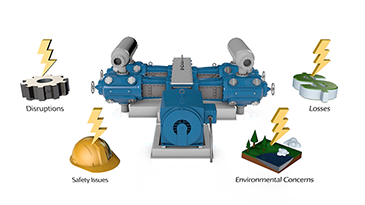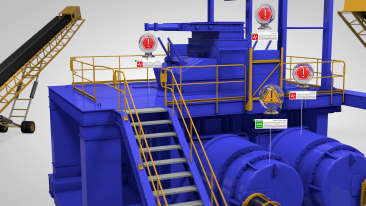The world economies have slowed, and commodities prices have changed significantly as demand decreases, forcing several major mining companies to revisit and adjust their plans for 2020. Regardless of size or commodity, almost all mining organizations across the world have changed the way they operate, adopting a wide variety of measures to keep staff safe.
Reducing On-Site Staffing
More than ever, mining operations are under increasing pressure to reduce personnel at the mine site and move them to do remote work. Some mines have temporarily closed head offices and asked staff to work from home. Most mines have limited the number of workers on site and instituted social distancing measures to keep their personnel safe.
With fewer people working on site, many mines have reduced their production plans and shifted their focus to equipment maintenance.
Accelerating Digital Transformation
Some mining companies — as well as organizations in other industries that have been slow to begin digitalization — are accelerating their digital transformation plans. With the shift to remote work, companies have realized they must ramp up quickly in order to maintain business continuity. Digital tools are a crucial enabler, as companies need to adapt to changing conditions and high levels of uncertainty more than ever before.
Asset performance management (APM) solutions that incorporate artificial intelligence (AI) and machine learning allow mines to anticipate equipment failures and better plan operations and maintenance activities. The ability to predict and prevent breakdowns allows mining companies to effectively reduce the risk of surprises to a minimum and avoid significant unplanned downtime. These solutions leverage existing equipment data and can be implemented remotely.
Accurate predictive capabilities enable a new way of making collaborative decisions based on asset conditions and quantitative reports. This technology requires staff to know the equipment and the process, not data science. The software does the heavy lifting, allowing maintenance teams to monitor large fleets of assets remotely and prioritize critical repairs.
In addition to monitoring equipment for potential failures, mines can leverage digital tools to evaluate thousands of different production scenarios in minutes. With insight into which factors have the greatest impact on production, mines can adjust accordingly and increase confidence in the plan. These solutions allow mines to minimize operational risks and uncertainty and avoid surprises like unplanned downtime.
In conclusion, mining companies should consider implementing solutions that will help their operations function more efficiently in the current restrictive conditions. By increasing reliability, executing the appropriate maintenance activities at the right time and improving agility in production planning, mines can address many of their most urgent challenges.
Learn more in our recent white paper, Maximize Mining Equipment Effectiveness.






Leave A Comment